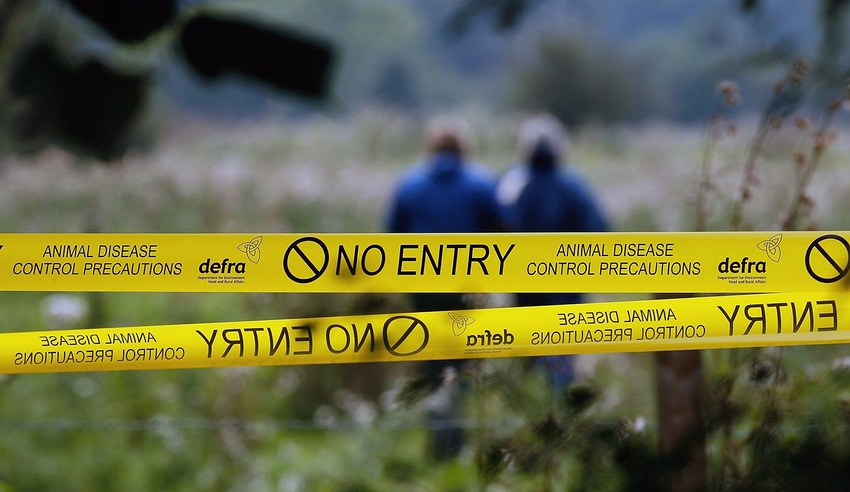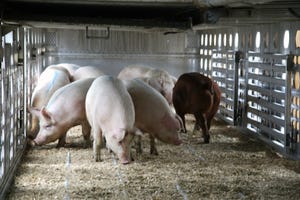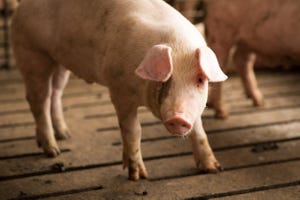Billions of reasons (dollars) to keep foot-and-mouth at bay
It has been estimated that a foot-and-mouth disease outbreak in the United States could cost $128 billion over a 10-year period, not including lost jobs to industries associated with livestock production.

I often get asked, “what keeps you up at night?” Working in the swine industry all my life, I understand the cyclical nature of this business. I know that everyone will have production challenges from time-to-time, and we are all aware of the delicate balance between supply and demand. However, the one thing that causes more concern for me is, what if the United States breaks with a foreign animal disease, specifically foot-and-mouth disease?
If you are in the livestock industry we have all seen the devastation that can be caused by FMD throughout the world. The 2001 outbreak in the United Kingdom is estimated to have cost them 8 billion pounds. A more recent outbreak in South Korea in 2010 and 2011 is estimated to cost their government $2.7 billion U.S dollars. As we look back at these outbreaks, it is apparent that the cost to producers, consumers and respective governments is staggering.
Most wealthy countries that have eradicated FMD have ongoing prevention costs to maintain preparedness should another outbreak occur. The European Union, for example, had a vaccination program for an FMD free zone in Turkey. They provided them with vaccine to prevent FMD from entering the EU. Although this can cost millions of dollars to implement and maintain, the total costs pale in comparison to the costs on eliminating exports overnight.
Now, the highest incidence rates of infection are in China, Africa, Middle East and South America. The United States has been fortunate not to have been impacted in over 88 years. The United States has had nine outbreaks of FMD with the first in 1870 in the New England states and the last occurring in California in 1929. (Source: American College of Pathologists FMD Fact Sheet, 2012)
Current growth of the U.S. swine industry is at 4% for 2016 and approaching another 4% in 2017. It will be vital that the United States maintain and grow our export markets. Last year the United States exported 25.8% of all pork when including both muscle cuts and variety meats. It is estimated this added $50.20 per head in value for 2016. With our per capita consumption reaching 196 pounds last year, we will have a difficult time increasing domestic consumption, so we will need to rely on improved export markets. (Source: USDA/FAS, NASS and USMEF)
If we were to have an FMD outbreak today, our export markets would be shut down immediately. To further complicate matters, the U.S. vaccine bank is limited. The United States currently has 2.5 million doses of vaccine available. It is estimated that if we were to have an outbreak in the United States it would take 10 million doses. The United States is the only country in the world that maintains its own vaccine bank. Since the U.S. government prohibits the antigen to be brought on the mainland, the antigen would be sent from its home on Plum Island to a manufacturing facility in either England or France.
Unfortunately, with the lack of vaccine, the disease could have devastating consequences to the U.S. livestock sector. It is estimated that the United States moves 1 million head of hogs and 400,000 head of cattle each day. Without the appropriate vaccine bank reserves, movement of animals across state lines most likely would be suspended. There is an effort to ask for funds in the 2018 farm bill to develop a plan for a vaccine bank should the United States ever be hit with FMD. As of now, Iowa State economist Dermot Hayes has estimated that an outbreak in the United States could cost $128 billion over a 10-year period. This is not including lost jobs to industries associated with livestock production in the United States. This concern will be brought up in the 2018 farm bill and the industry needs your support. Contact your representative and support allocation of funds to develop an FMD vaccine bank in the United States.
Malakowsky has more than 20 years of experience with AgStar Financial Services. For more insights from Malakowsky and the AgStar swine team, visit AgStar.com. If you’d like more information on AgStar’s Margin Manager Tool check it out at AgStar.com/MarginManager.
About the Author(s)
You May Also Like





